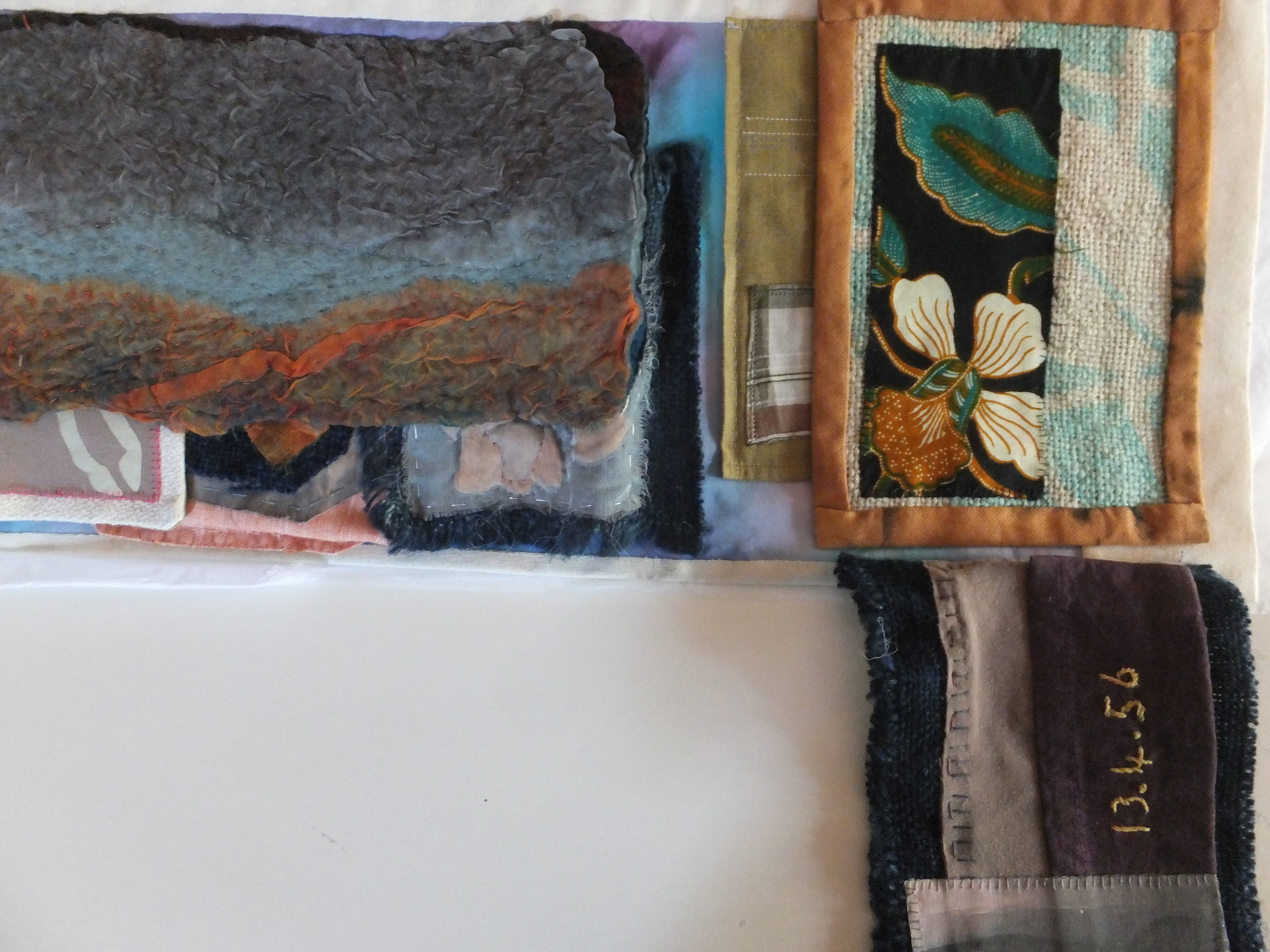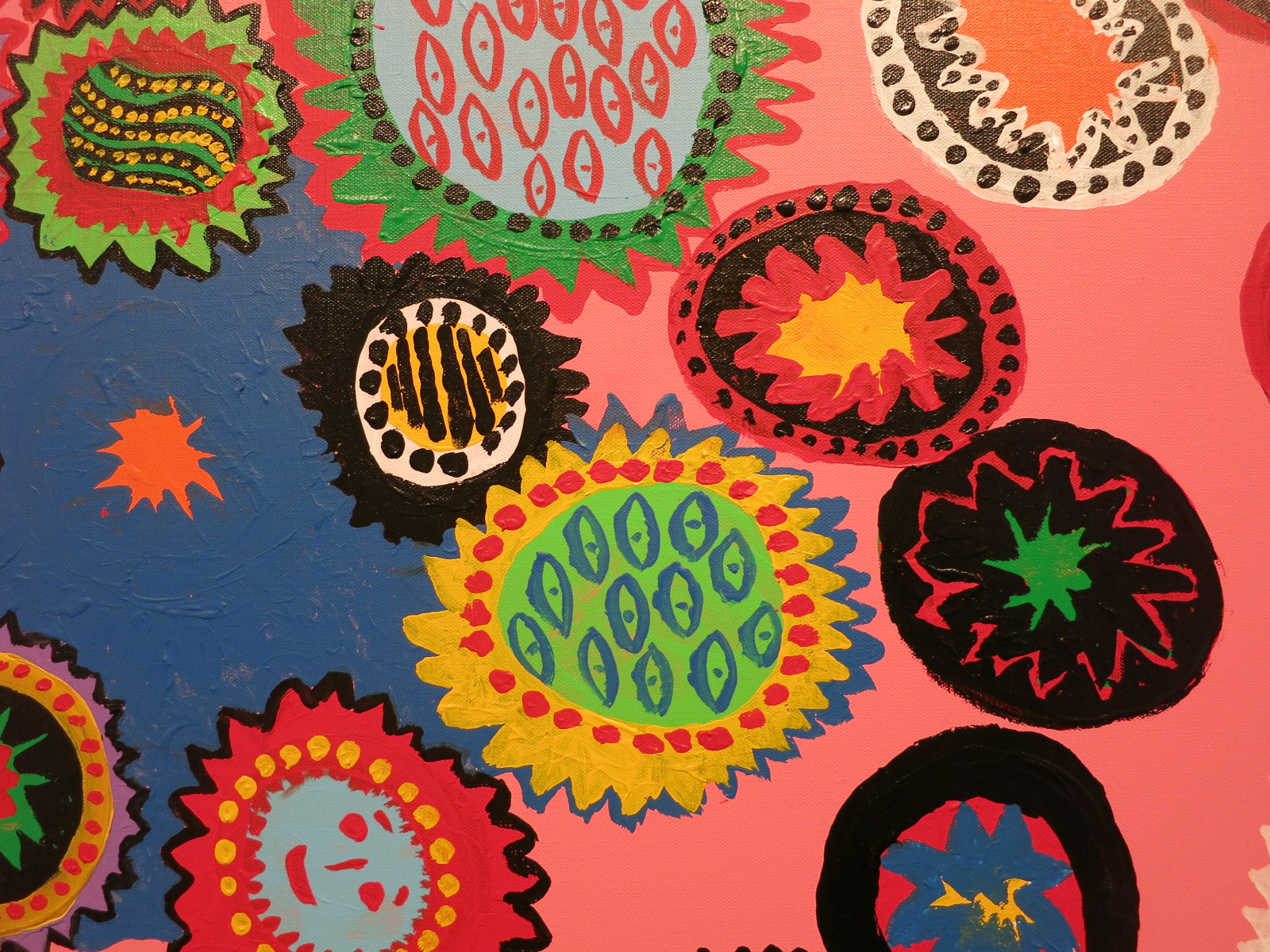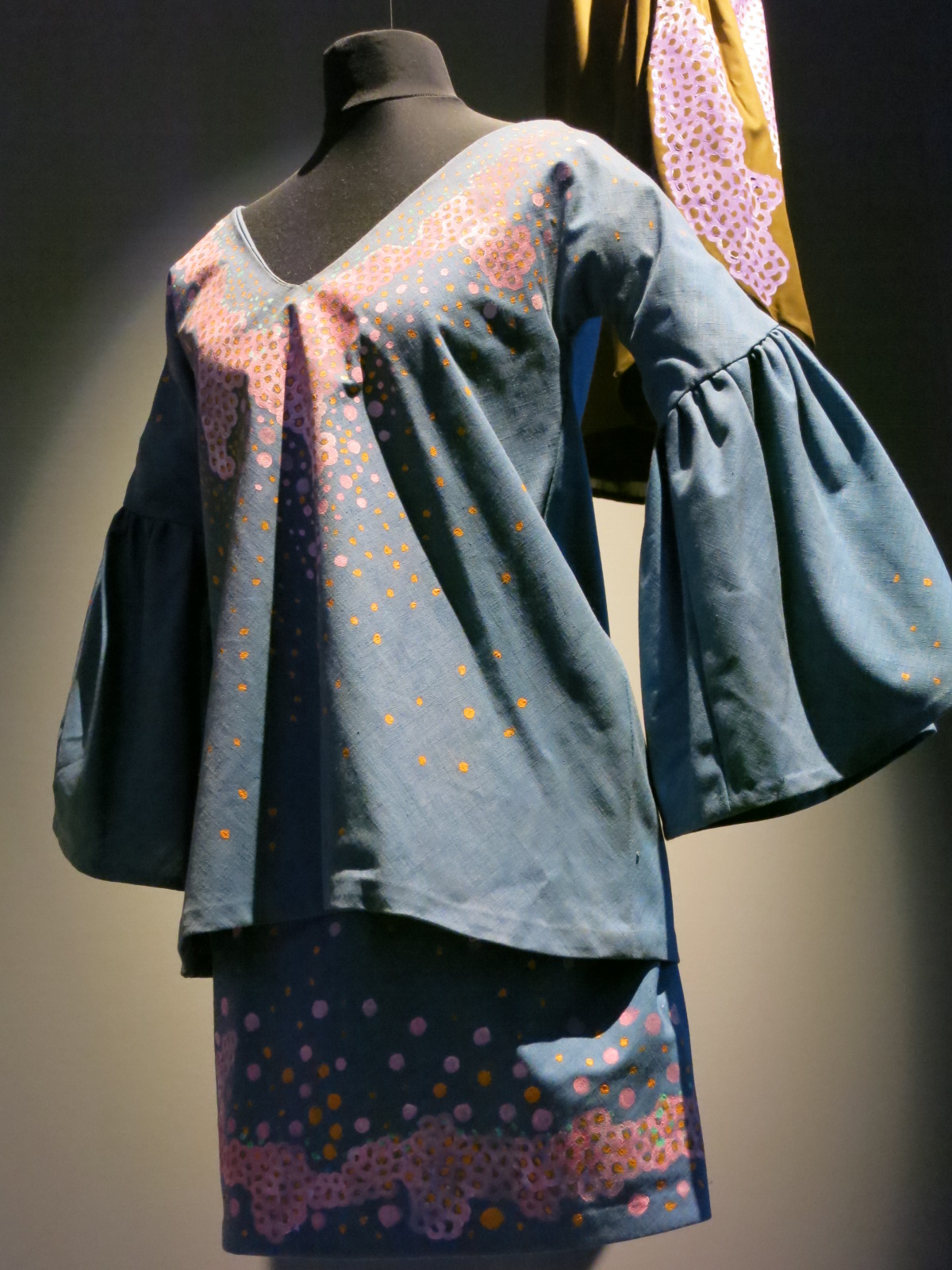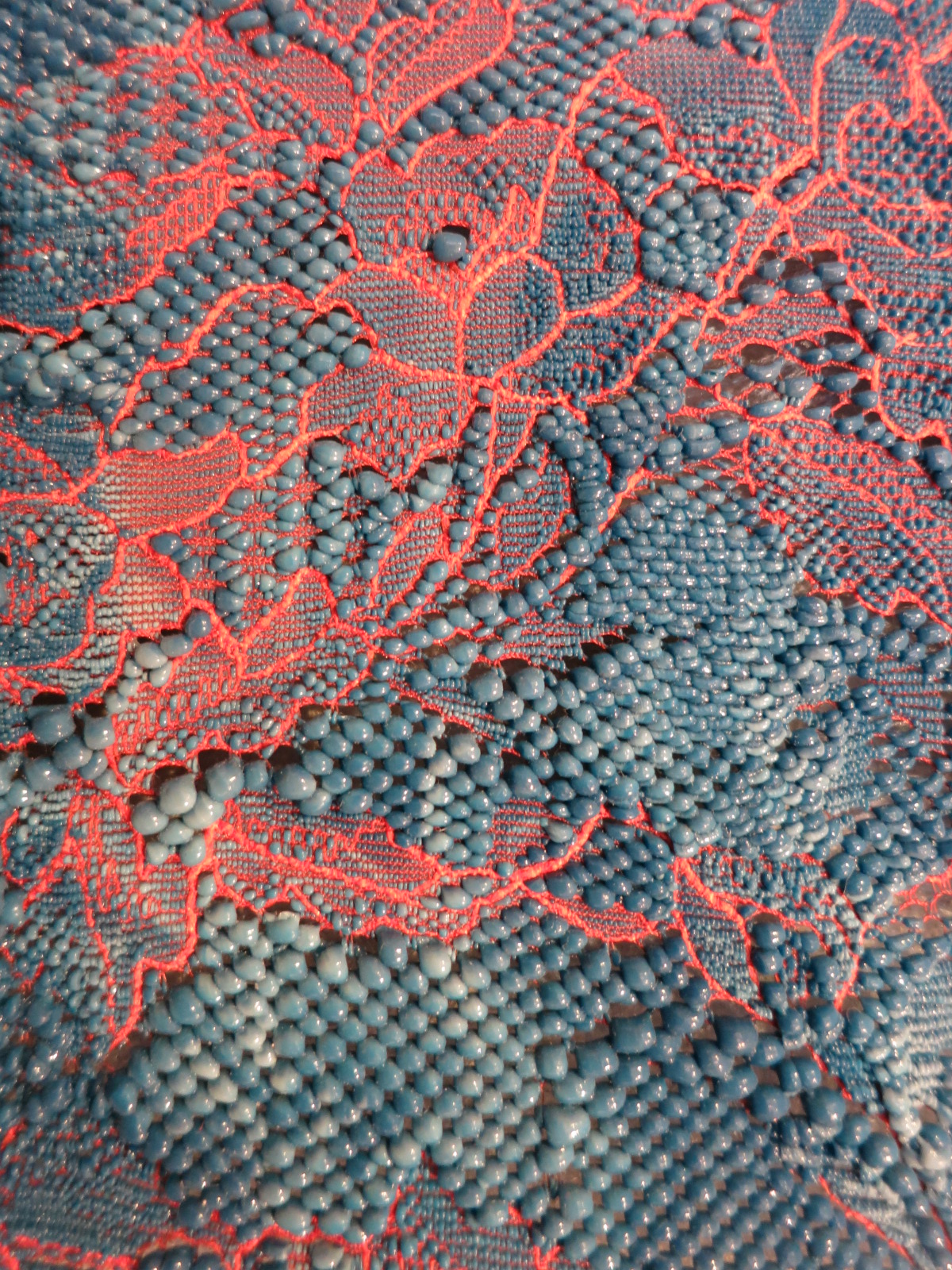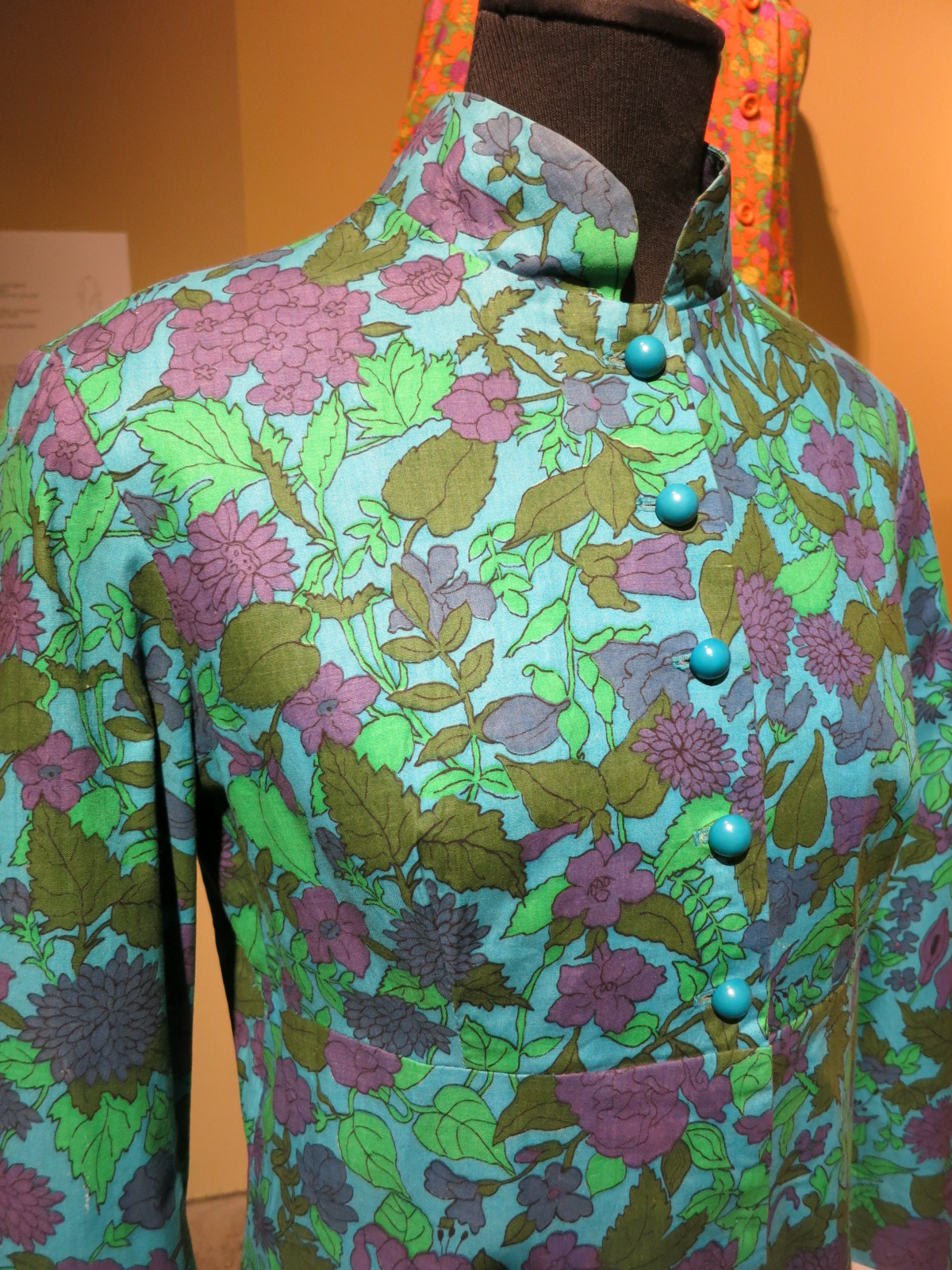I am a member and a tutor for the Embroiderers' Guild N.S.W. I designed installations for the Guild's very large feature space at the Craft & Quilt Fair in June 2015 and June 2016. The theme for this year was Carnaby Street 1960s. For the latter brief I wrote a brief for the members with 3 design influences - Pop, Romantic (think Biba) and Bohemian. Each area had a specific colour palette. The members responded with dresses, ties, scarves, handbags, (even a crocheted bikini with appliqued daisies) and items for the domestic sphere.
I will include images of works made by others but I will start with my Pop mini dress first!
Mary Brown's studio - pop mini dress in progress for the 'Carnaby Street 1960s installation
This is the front of the dress almost ready to take off the slate frame to make way for the back of the mini dress which was to feature the same border and pattern. As you can see, the very large slate frame (made by my brother Bill who is the most superb craftsman) is resting on 2 trestles (also made by Bill). This is the way I always work, except when I am teaching outside of my studio. Then I use a hoop frame - under sufferance!
The substrate for this dress is a satin finished silk organza. I love this substrate! It can carry the heaviest forms of embroidery without a problem - even goldwork embroidery! The sequins, beads and crystals (all purchased at Photius Bros in Sydney) conformed to the prescribed Pop palette in the brief. I chose the brightest colours in this palette!
Mary Brown - a detail of the Pop mini dress for the Carnaby Street 1960s installation.
This detail shows the edging around the neckline of the dress. I also used it around the armholes and at the hem. It is raised trailing stitch with a zig-zag stitch over the top. Pink Mill Hill Petite Beads were attached on the inside of the line of trailing. When I completed both sides of this dress, I joined the front and back at the sides and at the shoulders using French seams and I trimmed right back to the trailing stitch around the neckline, armholes and hem. I had to work sequin circles over the side seams after the dress had been assembled so that there would be no gaps in the pattern. No mean feat!
Mary Brown - the Pop mini dress in the Carnaby Street 1960s installation in the Embroiderers' Guild N.S.W's feature space in the Craft & Quilt Fair, Sydney June 2016
My friend Jaci Heyman designed and created a few pieces for this 'boutique' which you can see in the background - a daisy pop dress with matching handbag. The 'groovy' kerchief is her work and she did the appliqued daisies for Margaret Smith's crocheted bikini. The saucy bikini drew a lot of attention from the public!
I used a length of my own Marimekko fabric as a prop. I purchased several metres of this in 1972 but only used half of it in my first home after marriage. This left over length is in perfect condition.
Jaci Heyman's embroidered handbag in the Carnaby Street 1960s installation for the Embroiderers' Guild N.S.W's feature space in the Craft & Quilt Fair, Sydney June 2016
The kerchief on the back wall was designed and made by Helen Parsons and the paisley tie by Carolyn Pearce - both superb designers and embroiderers.
The tie on the left is by Joan Dunn and the tie on the right is by Val Tomlins - 2 of many ties in the Carnaby Street 1960s installation for the Embroiderers' Guild N.S.W's feature space in the Craft & Quilt Fair, Sydney June 2016
Rhonda Brownbridge created this child's skirt for the Carnaby Street 1960s installation in the Embroiderers' Guild N.S.W.'s feature space in the Craft & Quilt Fair, Sydney June 2016
Rhonda Brownbridge's quirky embroideries are based on her grandchildren's drawings.
Val Tomlin's 'Lord John Mural' in the Carnaby Street 1960s installation for the Embroiderers' Guild N.S.W's feature space in the Craft & Quilt Fair, Sydney, June 2016
This very large hand stitched embroidery by my friend Val Tomlins was placed on the side wall of the Guild's feature space. It created the illusion that we could see the famous Lord John mural in Carnaby Street from inside our boutique. The old window frame she found in her garage was the inspiration for this work.
In 12 months time I will post images of the work that will be in the Guild's feature space at the June 2017 Craft & Quilt Fair at the new Darling Harbour Exhibition Centre. This year the theme of the brief for the Guild members is 'Order & Chaos'. It has been designed by Val Tomlins, Sharyn Hutchens and Karen Morath. They have been on the Craft & Quilt Fair for the last 2 years with me. By November the brief should be published on the Embroiderers' Guild N.S.W's website. Have a look at the brief, and if you are not a member, but would like to make a work for next year's Fair, just join the Guild!




